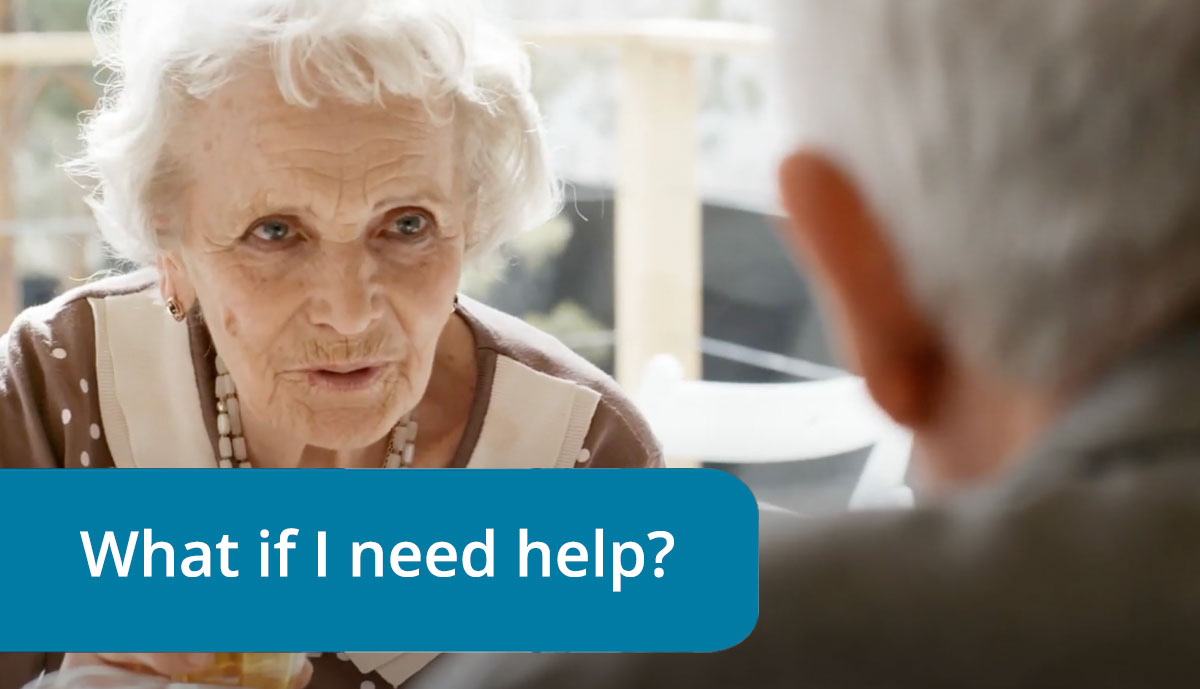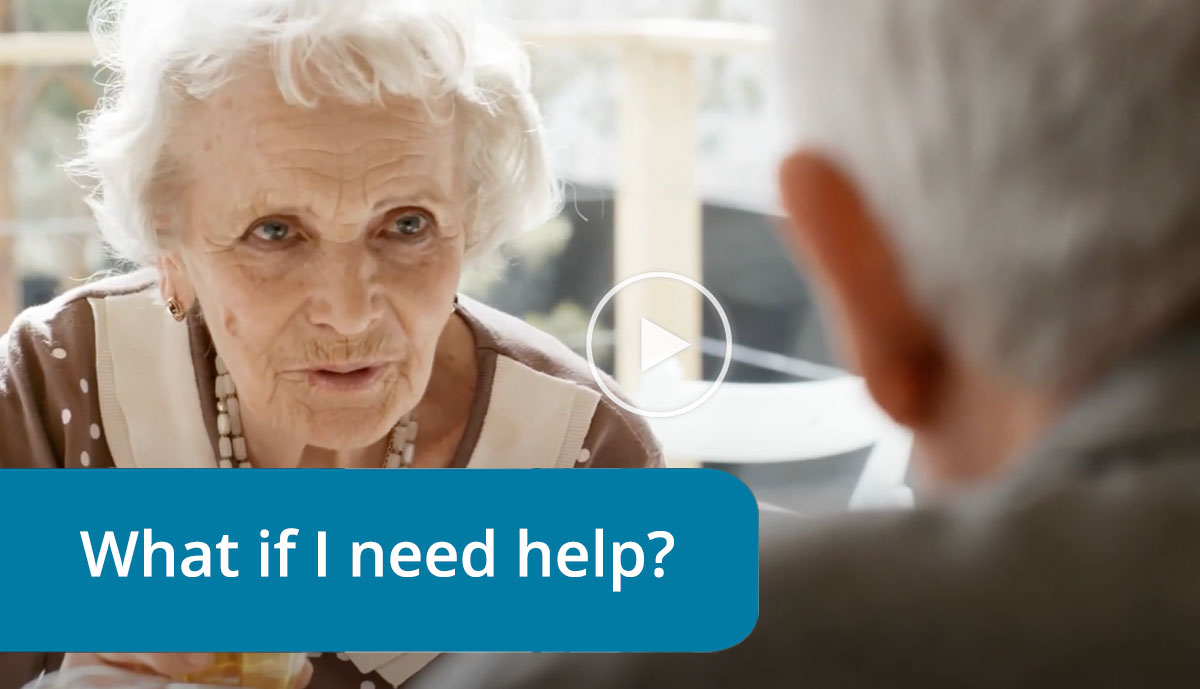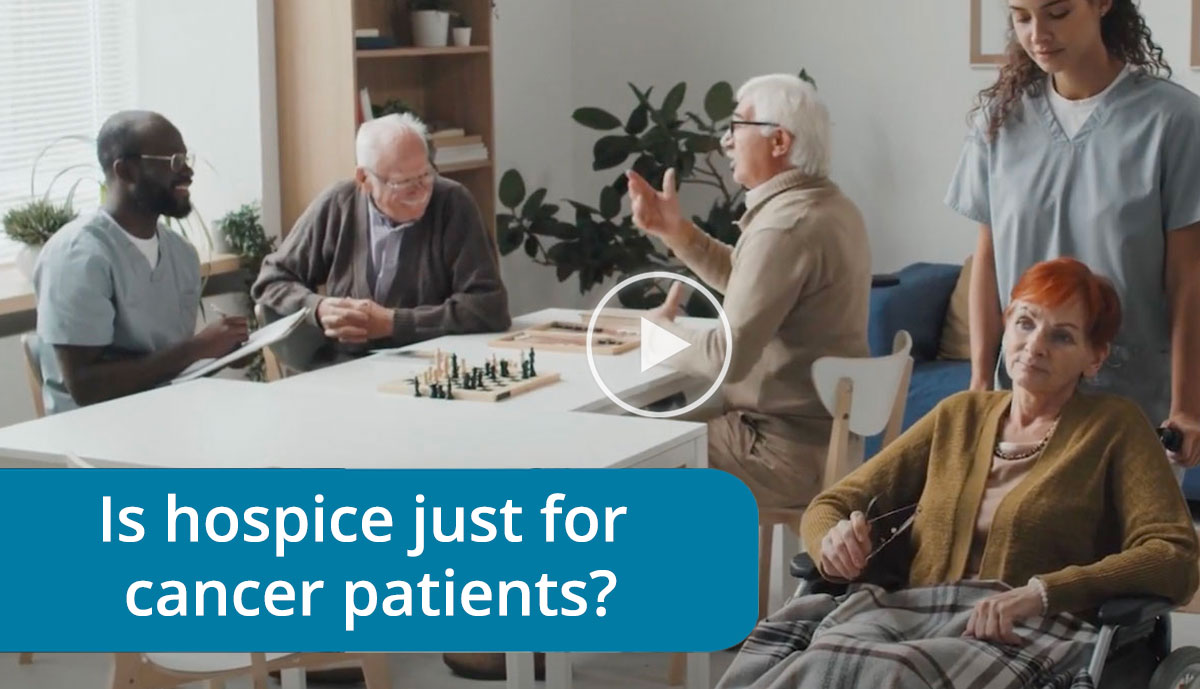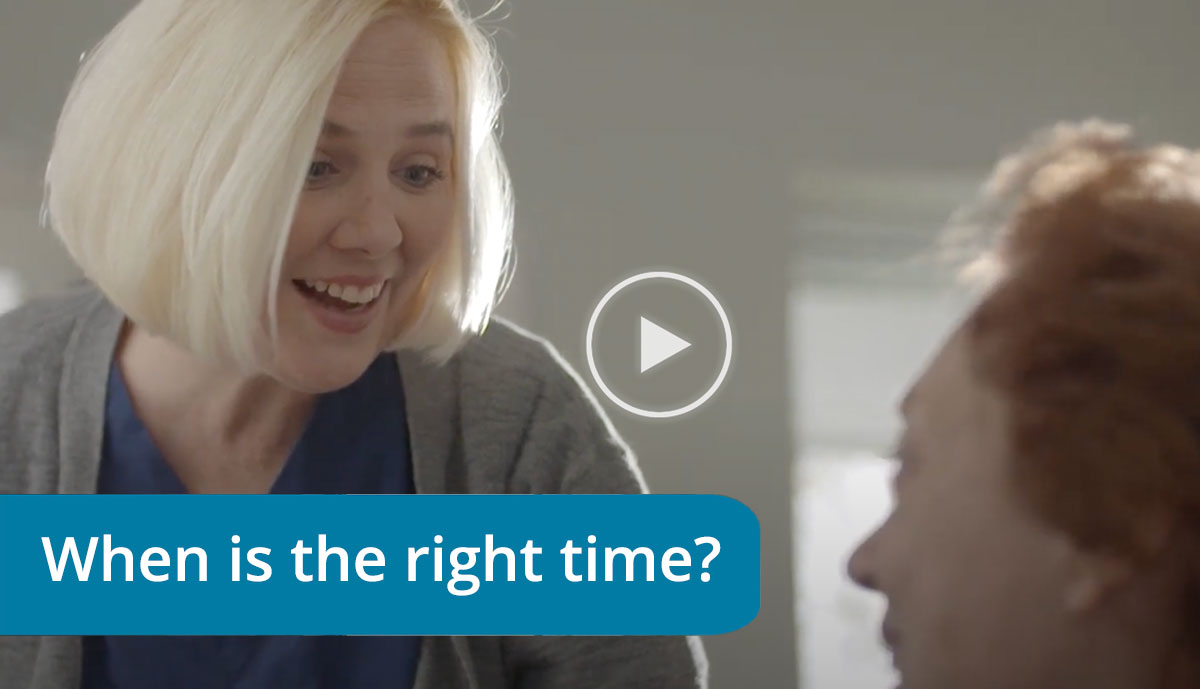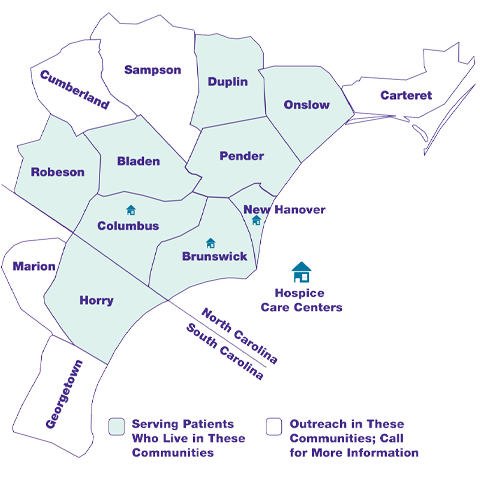Hospice Meets Your Needs
Hospice care teams develop individualized plans of care based on each patient and family’s goals. Dr. Ted Winneberger, hospice physician, explains how hospice care meets those goals as life-limiting illnesses progress.
The truth about hospice is our goal is to give a person whatever they want, as long as they want it, for as long as they can. Our hospice care services are designed to meet the needs of the ones you love.
We tell people all the time: This is the time in your life where you get to eat your dessert before your vegetables, if that’s what you want.
We Provide Appropriate Food for Specialized Needs
Since a vast majority of hospice patients receive care wherever they call home, we encourage them to eat whatever they want. If a person has to be admitted to our inpatient hospice care centers and they have a special diet or special needs, we try to satisfy that to the best of our abilities. Our family kitchen and our volunteers provide other supplemental things that people may want while they’re in one of our hospice care centers.
Hospice Care Services Also Understand the Importance of the “Little” Things in Life
Our goal is to do the best we can to manage the symptoms and minimize discomfort using the least medication interventions as possible. We also realize that it is often the simple pleasures in life that mean the most during this transition, and we want to make those available any time we can.
Does a hospice patient want a glass of wine with dinner? If that is special and memorable to them, then we encourage them to have a glass of wine with dinner. If they are in a hospice care center, we’ll certainly do our best to get them one. Likewise, if all they want to do is eat ice cream, then we’ll let them eat ice cream as long as they want it.
We try to do the best we can to give hospice patients whatever they want.
When Can Hospice Care Services Begin?
Hospice gets involved when the person starts transitioning to end-of-life, and it’s something that’s very natural. There are several parts to this process:
The hospice patient will start sleeping more
By definition, this end-of-life transition is a period of time when the body can no longer replace the energy it uses. When the body senses that, the hospice patient will sleep more. Then, the body will begin looking for energy in some non-vital organ in order to keep the rest of it functioning.
The hospice patient loses interest in eating
Then, the body tells the stomach, I don’t have the energy for eating. So when your loved one seems to be hungry, but only takes a few bites and then loses interest, that’s a very natural occurrence.
We don’t want to force people to eat as part of our hospice care services because that’s counteractive to the natural process of what the body is telling them.
Our Hospice Care Services Encourage Patients’ Choices Over Their Menu
Once the body slows down, the patient sleeps more and loses interest in eating. This is a natural part of the transition process, and nothing changes that.
Therefore, when a hospice patient does show an interest in eating, our goal is to let that person eat and drink what they want for as long as they can and to encourage it.
Lower Cape Fear Life Care Offers the Compassion and Comfort You and Your Loved Ones Need
Why choose Life Care?
We have consistently demonstrated our dedication to our patients and their families. We’re also continuing to expand our support to ensure we’re meeting the changing healthcare needs of our community.
In addition, we meet or exceed the national average on the national caregiver’s survey.
Most people we speak with wish they had contacted hospice sooner. Therefore, we invite you to contact us today by calling 800.733.1476.


